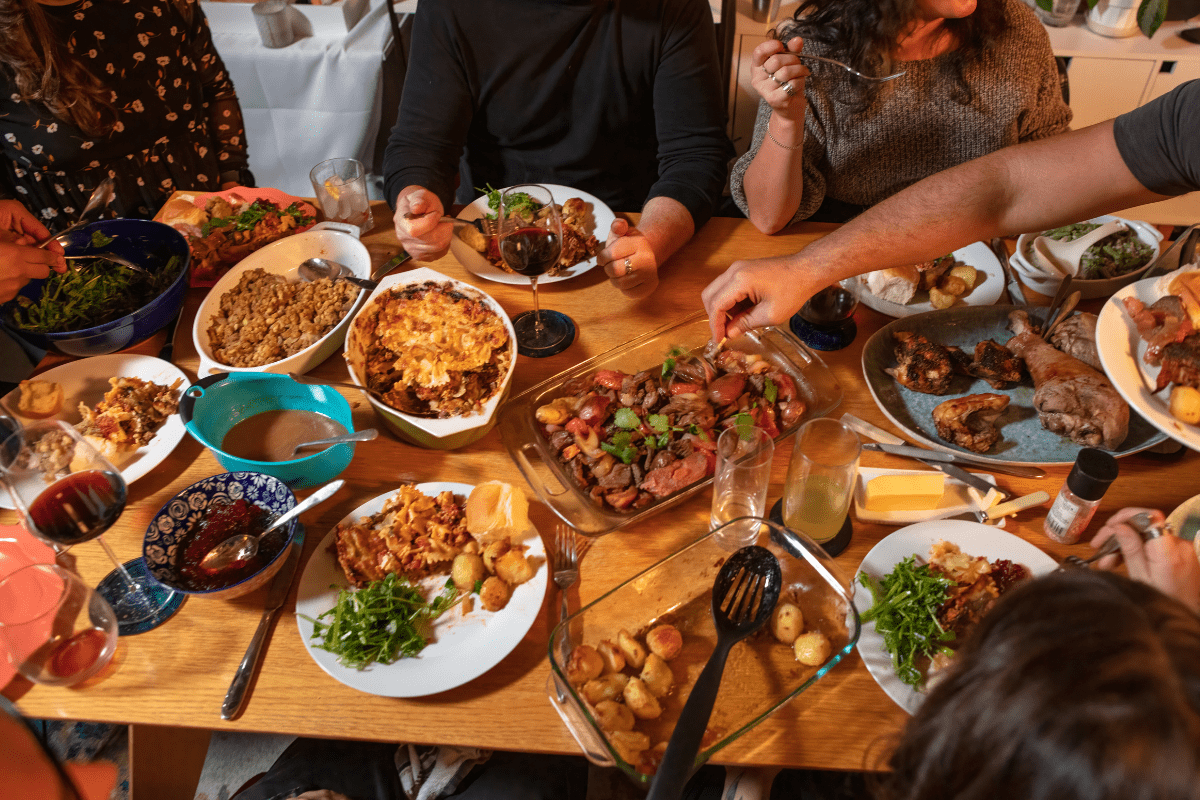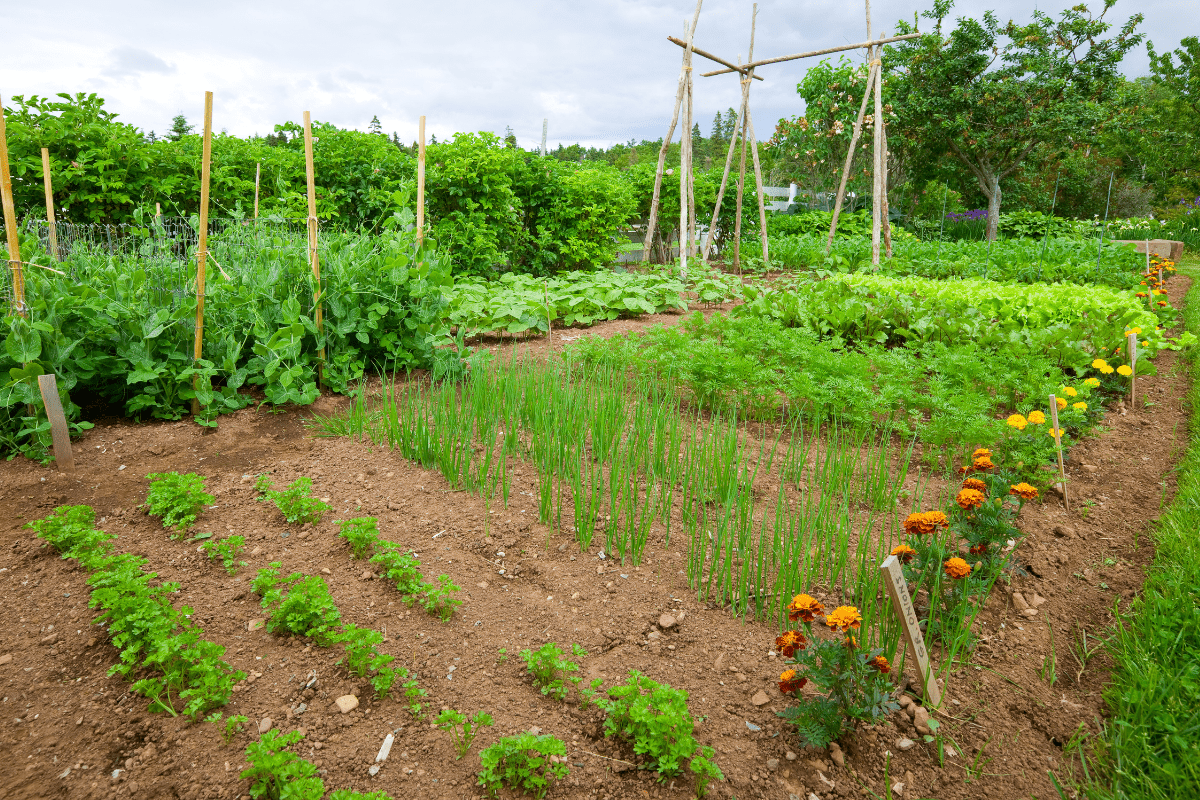Let me tell you about the time I accidentally ordered "pot likker" in rural Georgia and thought I was getting moonshine. Turns out it's the vitamin-rich broth from cooking greens, and locals dip cornbread in it like it's liquid gold. This pretty much sums up Georgia cuisine – it's full of surprises, deeply rooted in history, and absolutely nothing like what most tourists expect when they roll into Atlanta looking for "authentic Southern food."
Georgia's food scene is way bigger than you think
Georgia's culinary world is a massive $43.85 billion industry that goes far beyond peach cobbler and sweet tea. The state attracts 171 million visitors annually, and increasingly, they're coming for the food. With over 430 registered agritourism attractions, Georgia has quietly become a serious food destination while everyone was busy arguing about Texas versus Carolina barbecue.
What makes Georgia special isn't just the food itself, but how different regions tell completely different stories through their cooking. Atlanta's got five MICHELIN-starred restaurants doing things with boiled peanuts that would make your grandmother clutch her pearls. Meanwhile, the coast serves rice-based Gullah Geechee dishes that taste nothing like the corn-centric cuisine you'll find in the mountains. And those mountains? They're still cooking with foraged ramps and wild game like it's 1850, except now they charge $45 for the privilege.
The state produces 52% of America's peanuts, grows the only legally protected onion in the country (hello, Vidalia), and somehow convinced everyone they're the "Peach State" despite California growing way more peaches. But here's the thing – Georgia peaches actually taste better, and I'll fight anyone who disagrees.
The dishes you absolutely cannot skip
Shrimp and grits isn't just breakfast anymore
Let's start with shrimp and grits, Georgia's official state prepared food since 2002. This dish has gone through more transformations than a reality TV star. Originally a humble Gullah Geechee breakfast made from whatever shrimp the fishermen couldn't sell, it's now the darling of fine dining establishments across the state.
At The Grey in Savannah, James Beard Award-winning chef Mashama Bailey serves a version that would make those original coastal cooks proud while simultaneously blowing their minds. The key to authentic shrimp and grits? Wild Georgia white shrimp and stone-ground grits that actually taste like corn, not wallpaper paste. Skip any place serving instant grits – that's not food, that's a cry for help.
Brunswick stew: Georgia's answer to… everything
Brunswick stew is Georgia's version of "throw everything in a pot and argue about it." The state fights with Virginia over who invented it, but Georgia's version is distinctly different. While Virginia makes theirs smooth and refined (boring), Georgia keeps the meat in chunks and adds enough barbecue flavor to make vegetarians nervous.
Traditional Brunswick stew ingredients include:
- Pulled pork (not ground)
- Chicken (in actual pieces)
- Lima beans (yes, really)
- Corn (fresh, not canned)
- Tomatoes (crushed, not pureed)
- Secret barbecue sauce blend
The annual Brunswick Rockin' Stewbilee draws thousands who debate proper consistency with the passion usually reserved for SEC football. Pro tip: if you can't stand a spoon upright in it, it's too thin.
Fried green tomatoes and other movie-famous foods
Yes, fried green tomatoes became famous because of that movie filmed in Juliette, Georgia. Yes, the Whistle Stop Café still exists and serves them. No, they weren't invented for the film – Southerners have been frying unripe tomatoes forever because wasting food is basically a sin down here.
The best fried green tomatoes have a cornmeal crust that shatters when you bite it, revealing a tart, firm tomato that hasn't gone mushy. Modern restaurants dress them up with remoulade sauce and microgreens, but honestly? They're perfect with just a sprinkle of salt.
Other must-try Georgia classics include pimento cheese (which locals spread on everything from crackers to burgers), boiled peanuts (an acquired taste that you'll either love or think tastes like salty mush), and peach everything during summer. The Fort Valley Peach Festival features the world's largest peach cobbler – it's 11 feet by 5 feet of diabetes-inducing glory.
Regional food personalities across the state
Atlanta: Where tradition meets your wildest food dreams
Atlanta's food scene is having an identity crisis in the best possible way. With approximately 12,000 restaurants, the city can't decide if it wants to preserve grandma's recipes or fusion-ize everything with kimchi. The answer, apparently, is both.
Poor Calvin's perfectly embodies this split personality, serving Vietnamese-Southern fusion that includes fried green tomatoes with Japanese aioli. Meanwhile, Mary Mac's Tea Room, the city's last traditional tea room, stubbornly serves the same fried chicken and pot likker it's been slinging since 1962. Both approaches work because Atlantans will eat anything if it's good enough.
The real treasure is Buford Highway, Atlanta's "international corridor" where you can eat your way around the world without leaving the perimeter. This is where Georgian ingredients meet global techniques, creating dishes that would confuse your ancestors but delight your taste buds.
Savannah and the coast: Rice rules everything
Coastal Georgia cuisine is fundamentally different from the rest of the state, thanks to the Gullah Geechee people. These descendants of enslaved West Africans were brought specifically for their rice cultivation expertise, and boy, does it show in the food.
Here's what makes Lowcountry cuisine unique:
- Rice is the base, not corn
- Seafood in everything possible
- "Dash cooking" without measurements
- West African flavor profiles
- One-pot rice dishes galore
She-crab soup, red rice (similar to West African jollof), and proper Lowcountry boil all originated here. The cooking style called "dash cooking" means recipes pass down orally, with no measurements – you just dash in seasonings until it tastes right. This drives food bloggers crazy but produces incredibly flavorful food.
North Georgia mountains: Where Appalachia meets elegance
The mountains preserve Appalachian traditions that predate most "traditional Southern" cooking. Here, Cherokee agricultural influences blend with Scots-Irish preservation techniques to create a cuisine heavy on game meats, foraged foods, and things your hipster friends would pay $200 for at a Brooklyn restaurant.
The Dillard House has been serving family-style mountain food since 1917, and their menu reads like a foraging expedition: wild turkey, venison, morel mushrooms, ramps, and pawpaws. Modern mountain restaurants charge premium prices for these "heritage ingredients," but locals still gather them for free if they know where to look.
The ingredients that make Georgia special
Peanuts: Georgia's underground gold
Georgia doesn't just grow peanuts; it grows 2.4 billion pounds annually, accounting for over half of America's supply. Most are Runner peanuts, perfect for peanut butter, but the real Georgia experience is boiled peanuts – raw peanuts simmered in salty water until they're soft and addictive.
Roadside stands sell them in brown paper bags, and eating them is messier than a toddler with spaghetti. You crack the shell with your teeth, suck out the salty juice (this is crucial), then eat the soft peanuts inside. Tourists either become instant converts or wonder why anyone would ruin perfectly good peanuts this way.
Vidalia onions: The celebrity vegetable
Vidalia onions are so special they have their own legal protection. Grown only in 20 specific South Georgia counties, these onions are sweet enough to eat like apples (though please don't, that's weird even for Georgia).
Available from mid-April through early September, Vidalias transformed how people think about onions. The low-sulfur sandy soil creates their distinctive sweetness, and yes, there's a massive festival celebrating them every spring.
Peaches and pecans: The dynamic duo
Despite California growing more peaches by volume, Georgia peaches taste better because of the state's unique soil and climate conditions. With over 40 commercial varieties grown along the fall line, peak season runs from mid-May through August, with July being absolute perfection.
Georgia also leads pecan production with 144,000 acres yielding 100 million pounds annually. Albany calls itself the "Pecan Capital of the World," which seems like a stretch until you taste a fresh Georgia pecan pie made with native Stuart or Desirable varieties.
The complicated, beautiful history on your plate
Here's where things get real. Georgia cuisine isn't just about tasty food – it's a complex story of cultural exchange, survival, and innovation that most tourists never learn about while scarfing down their fourth basket of cornbread.
Cherokee women developed sophisticated agricultural systems, growing corn, beans, and squash together in a technique that permaculture enthusiasts now pay thousands to learn. As Cherokee Nation chefs note, "Native dishes always come with a story."
But the most profound influence came from enslaved Africans. Food historian John T. Edge states plainly: "Southern food is black food. Full stop." This isn't political correctness – it's historical fact. Enslaved cooks transformed scraps into delicacies, preserved African cooking techniques, and created what we now consider Southern cuisine.
Chef Hugh Acheson puts it powerfully: "Authentic Southern food came here in the pockets of slaves and on the backs of a gross period in history, so we have to pay homage to that and understand that."
How to eat like a local (and avoid tourist traps)
Finding authentic Georgia food requires developing a sixth sense for tourist traps. Here's your survival guide:
Good signs:
- Parking lot full of pickup trucks
- Menu on a chalkboard
- Servers who call you "honey"
- Located 2-3 blocks from attractions
- Vegetables cooked with pork
Red flags:
- Laminated menus with photos
- Someone outside trying to seat you
- "Southern" in the restaurant name
- Everything available "Nashville hot"
- Instant grits (run away)
The "meat and three" concept confuses newcomers – you choose one protein and three sides from a list of vegetables that were definitely not prepared with health in mind. These vegetables contain more pork than some main dishes. When locals say "vegetables," they mean "vegetables cooked with ham hocks until they surrender."
Speaking of dietary restrictions, traditional Georgia cuisine is challenging for vegetarians. That innocent-looking green bean casserole? Bacon. The cornbread? Cracklins. The collard greens? Definitely ham hock. Urban areas offer more options, but in rural Georgia, "vegetarian" might still include chicken broth because "that's just flavoring."
Planning your Georgia food adventure
The best approach to Georgia's food scene depends on your timeline and stomach capacity:
Weekend warrior approach: Focus on one region. Hit a farmers market Saturday morning, take a cooking class, then eat your way through 2-3 signature restaurants.
Week-long feast:
- Start in Atlanta for diversity
- Head to Savannah for coastal cuisine
- Drive through rural areas for farm visits
- End in North Georgia mountains
Seasonal considerations:
- Peach season (July): Book everything early
- Vidalia onion season (April-May): Farm tours available
- Fall (October-November): Pecan harvest and apple picking
- Winter: Best restaurant availability
Agritourism destinations like Jaemor Farms offer pick-your-own experiences, cooking classes, and the chance to see where your food actually comes from. These aren't just tourist attractions – they're working farms that happen to let city folks pretend to be farmers for a day.
The bottom line on Georgia's food scene
Georgia cuisine is experiencing a renaissance that honors its complex past while pushing boldly into the future. Young chefs are taking their grandmothers' recipes and asking "what if?" while agricultural tourism helps travelers understand that good food starts in the soil.
The state's unique position – coastal Gullah Geechee traditions, mountain Appalachian foodways, urban international fusion, and agricultural abundance – creates a food landscape unlike anywhere else in the South. It's messier than Nashville's hot chicken scene, more diverse than Carolina's barbecue regions, and definitely more surprising than whatever food stereotype you arrived with.
Whether you're slurping pot likker in a rural diner, trying Vietnamese-Southern fusion in Atlanta, or eating Gullah red rice on the coast, Georgia's food tells stories. Some are triumphant, some are painful, but all are worth hearing. Just come hungry, keep an open mind, and for the love of all that's holy, never ask for instant grits.





